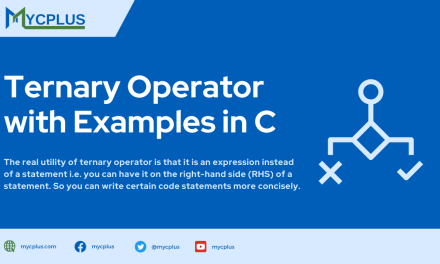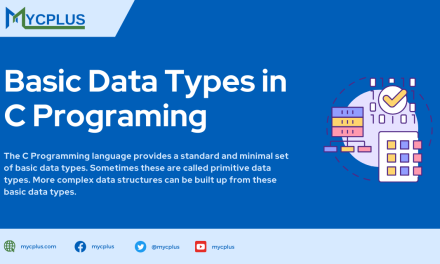Welcome to the world of programming! As you embark on your journey to understand Object-Oriented Programming (OOP) in C++, it’s essential to grasp the evolution of programming approaches that led to its development.
In the early days of computing, programmers experimented with various techniques like modular programming, top-down programming, bottom-up programming, and structured programming to handle the growing complexity of software. Structured programming, a dominant force in the 1980s facilitated the creation of moderately complex programs. However, as software projects expanded, structured programming struggled to meet the demand for bug-free, maintainable, and reusable code.
Enter Object-Oriented Programming (OOP). In the OOP paradigm, an “object” serves as a representation of a real-world concept, possessing both properties (states) and functionalities (behavior). Think of an object as a digital version of something from the real world, like a human, inheriting properties and functionalities from its ancestors.
For a programming language to be considered Object-Oriented, it must support the concept of objects (abstract data types), inheritance, and polymorphism. In simple terms, OOP allows you to model your code after real-world entities, making it more intuitive and efficient. As you delve into C++ and its OOP features, keep in mind that the goal is to create programs that are not only functional but also easy to understand, maintain, and reuse.
Table of Contents
- Definition of Object Oriented Programming
- C++ and Object Oriented Programming
- A Simple Object Oriented Program in C++
Definition of Object Oriented Programming
Object-Oriented Programming (OOP) is an approach to organizing and developing programs that aims to address challenges inherent in conventional programming methods. It blends the strengths of structured programming with innovative concepts like data encapsulation, inheritance, and abstract data types.
The key principles of OOP are:
- Data Encapsulation: OOP encapsulates data, bundling it with the methods that operate on the data. This helps in creating modular and self-contained units, enhancing code organization and readability.
- Inheritance: OOP allows the creation of new classes by inheriting attributes and behaviors from existing classes. This promotes code reuse, making it easier to build upon existing code and maintain a hierarchical structure.
- Abstract Data Types: OOP introduces the concept of abstract data types, enabling the definition of data structures with associated operations. This abstraction enhances code modularity and facilitates the creation of scalable and adaptable programs.
OOP is not tied to a specific programming language; rather, it is a programming paradigm that can be implemented in various languages. The development of OOP was prompted by limitations identified in earlier programming approaches. To understand the significance of OOP, it is crucial to examine the drawbacks of traditional programming methods and how they gave rise to the need for a more effective and organized programming paradigm.
C++ and Object Oriented Programming
C++ empowers programmers with a robust set of tools to implement Object-Oriented Programming concepts effectively. A well-crafted C++ program showcases elements from both paradigms, making it a powerful tool for software development. The language was specifically designed to overcome the limitations of procedural programming languages.
Here are some key features that highlight its OOP capabilities:
- Access Specifiers: C++ allows the use of public and private access specifiers to control access to data, objects, and functionality within a program. This enables the encapsulation of data and methods, promoting a more secure and organized code structure.
- Data Hiding: Programmers can leverage C++ to hide sensitive data from unauthorized access. By utilizing private access specifiers, certain aspects of the program can be concealed, enhancing security and preventing unintended modifications.
- Multiple Inheritance: C++ supports multiple inheritances, allowing a class to inherit properties and behaviors from multiple base classes. This flexibility facilitates the creation of complex and reusable code structures.
The richness of features provided by C++ makes it a preferred choice for programming across various operating system platforms. Its ability to seamlessly integrate both procedural and object-oriented programming styles makes it a go-to language for developers seeking a balance between efficiency and organization in their software projects.
A Simple Object Oriented Program in C++
Let’s take a look at a simple Object-Oriented “Hello World” program in C++. The program is explained below in a few lines:
1 2 3 4 5 6 7 8 9 10 11 12 13 14 15 16 17 18 19 20 21 22 23 24 25 26 27 28 29 30 31 32 | #include <iostream> using namespace std; // Define a class named HelloWorld class HelloWorld { public: // Constructor to initialize the object HelloWorld() { message = "Hello, World!"; } // Member function to display the message void displayMessage() { cout << message << endl; } private: // Private member variable to store the message string message; }; // Main function where the program execution begins int main() { // Create an object of the HelloWorld class HelloWorld myHelloWorld; // Call the displayMessage function to show the message myHelloWorld.displayMessage(); // Indicate successful program execution return 0; } |
Here we break down the key components of this simple Object-Oriented program:
- Class Definition (HelloWorld):
- The program defines a class named
HelloWorld. - It has a public section with a constructor (
HelloWorld()) and a public member function (displayMessage()). - The private section contains a member variable (
message) to store the greeting.
- The program defines a class named
- Constructor:
- The constructor (
HelloWorld()) initializes themessagemember variable with the “Hello, World!” string when an object of the class is created.
- The constructor (
- Member Function (
displayMessage):- The
displayMessagefunction prints the stored message to the console usingcout.
- The
- Main Function:
- The
mainfunction is where the program execution begins. - It creates an object (
myHelloWorld) of theHelloWorldclass. - Calls the
displayMessagefunction on the created object to display the greeting.
- The
This simple program demonstrates the fundamental concepts of an Object-Oriented Programming approach in C++. The class encapsulates data (the greeting message) and behavior (the display functionality), promoting code organization and reusability.






